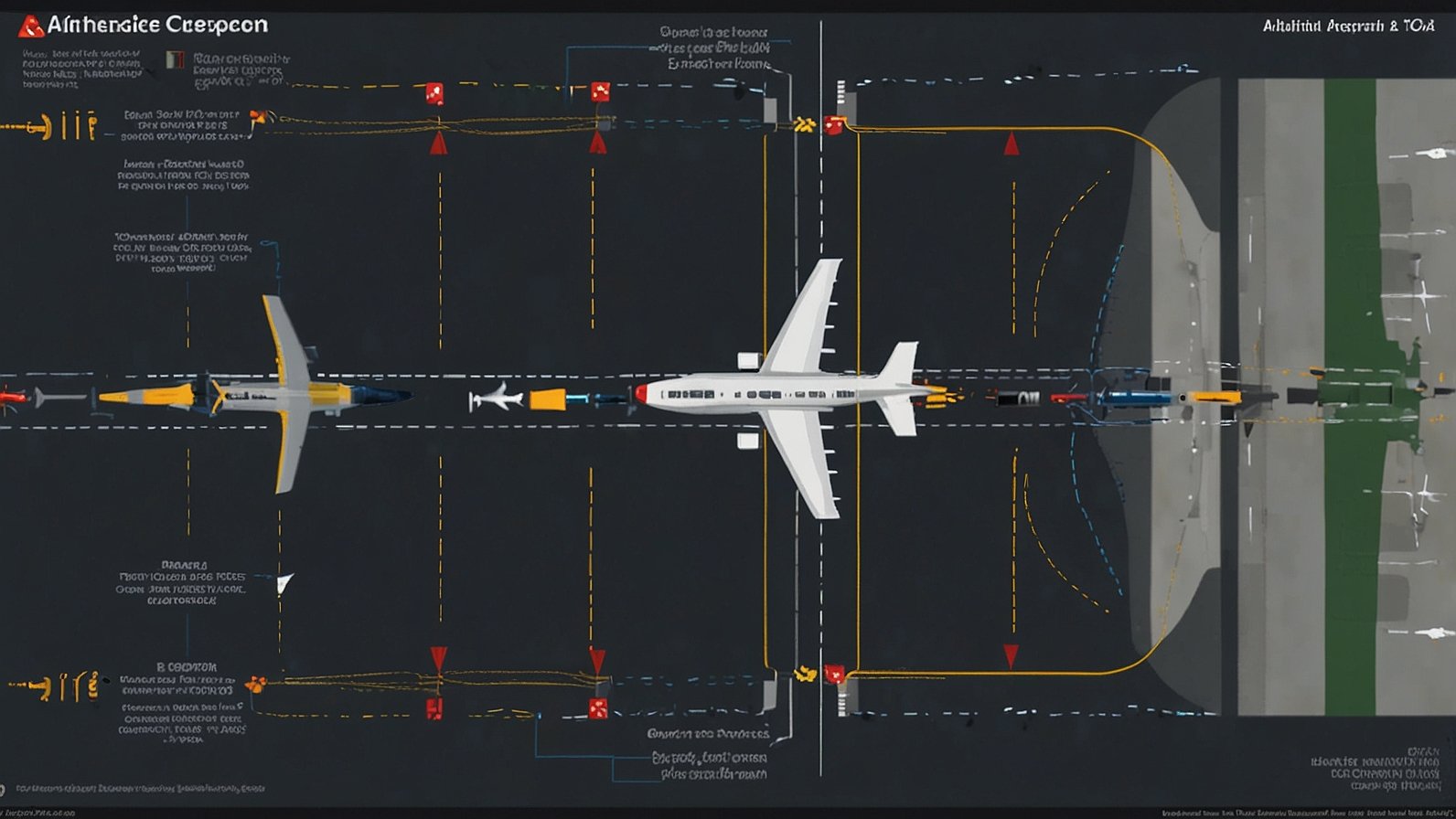Did you know that on any given day, dozens of flights make precautionary landings? It’s a testament to an industry built on safety-first protocols. The recent United Airlines Flight UA770 emergency diversion is a perfect example. It wasn’t a Hollywood-style disaster; it was a textbook demonstration of training, technology, and teamwork ensuring everyone’s well-being.
This incident, while undoubtedly stressful for those onboard, is a powerful story of something going right. It shows what happens when highly trained professionals follow their protocols exactly as designed. Let’s pull back the curtain on this event and understand why it exemplifies the incredible safety net built into every commercial flight.
What Happened on United Airlines Flight UA770?
While specific details are formally communicated by the National Transportation Safety Board (NTSB) and the airline, here’s a general breakdown of how such events unfold, based on initial reports and standard industry practice.
- The Flight Path: United Flight UA770 was a scheduled international service. The aircraft involved was a Boeing 777, a wide-body jet known for its reliability and long-range capabilities.
- The Issue: During the flight, the flight crew became aware of a potential technical issue. It’s crucial to note that modern aircraft are designed with immense redundancy. A warning light or an irregular sensor reading doesn’t mean imminent danger; it means the system is doing its job by alerting the pilots to a potential anomaly.
- The Decision: Following their rigorous training, the pilots assessed the situation, communicated with United’s maintenance and operations teams on the ground via satellite, and consulted with air traffic control (ATC). The unified decision was to divert as a precautionary measure.
This is the most important takeaway: the diversion was proactive, not reactive. It was about eliminating risk long before it could become a real problem.
The Step-by-Step Guide to a Successful Emergency Diversion
So, what does “executing standard procedures” actually look like? It’s a finely choreographed dance between several parties. The response to the United Airlines Flight UA770 emergency diversion would have followed a script that every pilot and controller knows by heart.
- Crew Identification and Assessment: The pilots identify the issue and run through quick, memory-based checklists to stabilize the aircraft’s situation. One flies the plane, while the other handles the communications and checklists.
- Declaring the Situation: The crew contacts Air Traffic Control using a specific phrase. They don’t panic; they state clearly: “Mayday, Mayday, Mayday” for grave danger or “Pan-Pan, Pan-Pan, Pan-Pan” for a serious but not immediately life-threatening urgency (the latter is more common for technical issues).
- ATC Coordination: The air traffic controller becomes the crew’s primary ground support. They clear the immediate airspace, provide vectors (directions) to the nearest suitable airport, and notify emergency services on the ground. All other traffic is moved aside without question.
- Choosing the “Nearest Suitable Airport”: This doesn’t always mean the closest strip of pavement. “Suitable” means an airport that can handle the aircraft’s size, has the necessary emergency services, and has weather conditions that are safe for landing.
- Passenger Communication: The cabin crew is briefed by the pilots and then calmly informs passengers of the diversion, instructing them to prepare for landing. Their training focuses on keeping everyone calm and secure.
- Landing and Response: The aircraft lands, where it is typically met by airport fire and rescue services as a standard precaution. They follow the aircraft to its parking gate.
Common Misconceptions About Emergency Diversions
When you hear about a flight diversion, it’s easy to let your mind jump to the worst-case scenario. Let’s clear up a few common fears.
- “The plane was about to crash!” – This is almost never the case. Diversions like the one for Flight UA770 are preventative. Think of it like your car’s “check engine” light coming on during a road trip. You wouldn’t keep driving for hours; you’d get it looked at at the next town. That’s all a pilot is doing.
- “Something must be terribly wrong with the airline or plane model.” – Mechanical issues can happen to any machine, no matter how well-maintained. The true measure of an airline’s safety is not if an issue occurs, but how they handle it. United’s response was by the book.
- “The pilots were panicking.” – Quite the opposite. Pilots train for hundreds of hours in simulators for exactly these scenarios. Their entire profession is built on making calm, rational decisions under pressure.
3 Key Takeaways from the UA770 Incident
This event isn’t just a news blip; it’s a learning opportunity for all of us who fly.
- The System Works: From the crew in the cockpit to the air traffic controllers on the ground and the airport firefighters, everyone performed their role perfectly. This multi-layered safety net is why air travel is the safest mode of transportation.
- Precaution is the Highest Form of Safety: The goal is never to “push through” a problem. The golden rule is always to minimize risk, and that means landing to investigate any potential issue, no matter how small it might seem.
- Passenger Well-being is Central: A diversion is a massive logistical and financial headache for an airline. The fact that they do it without hesitation shows that passenger and crew safety is truly the number one priority, as it should be.
The next time you buckle your seatbelt, remember the immense amount of training and technology dedicated to your safety. Incidents like the United Airlines Flight UA770 emergency diversion shouldn’t scare you; they should give you confidence.
What’s one thing you learned today that makes you feel safer about flying?
You May Also Read: Delta Flight DL275 Diverted LAX: Why Safety Always Wins Mid-Flight
FAQs
What was the exact reason for the United Flight UA770 diversion?
The specific technical reason is typically determined by maintenance teams after landing and is officially released by the airline or the NTSB. For precautionary diversions, it’s often a sensor issue, a minor hydraulic leak, or an indicator light that needs to be checked out on the ground.
Was anyone injured during the diversion?
Based on reports, the landing was safe and successful. There were no injuries reported. The diversion was a precaution, not due to an actual catastrophic event.
Where did the flight divert to?
The flight diverted to a nearby major airport that could accommodate its size and had the necessary facilities. The choice is always based on the “nearest suitable airport” protocol.
What happens to passengers after a diversion like this?
The airline is responsible for their care. This usually includes rebooking them on the next available flight, providing meal vouchers, and arranging hotel accommodation if necessary, as per the airline’s policies.
How common are emergency diversions?
Precautionary diversions are relatively common in the aviation industry. They happen multiple times a day across the globe, but most are for minor issues and don’t make the news. They are a standard part of airline operations.
Does this mean the Boeing 777 isn’t a safe aircraft?
Absolutely not. The Boeing 777 has an exceptional safety record. All complex machinery, from cars to airplanes, can experience minor issues. The robust systems and trained crew on the 777 are designed to handle them seamlessly.
Can I get compensation for a flight diversion?
It depends on the circumstances and your departure/destination countries’ regulations. If the diversion was due to a mechanical issue (within the airline’s control), you may be entitled to compensation or care under rules like the EU’s EC 261. It’s best to check directly with the airline.










